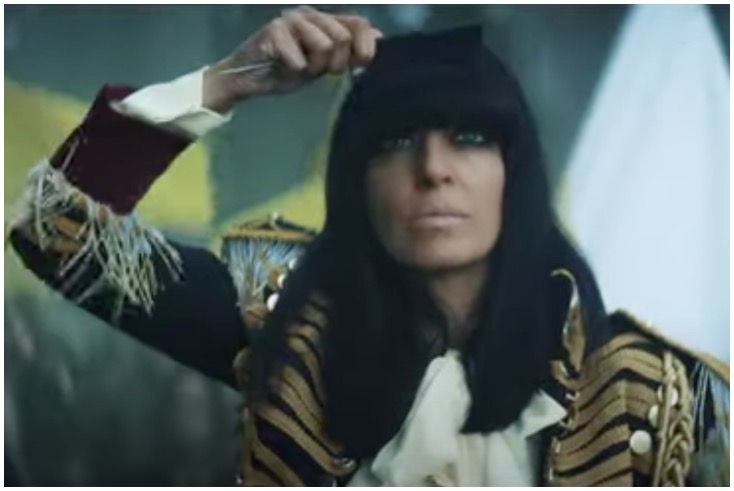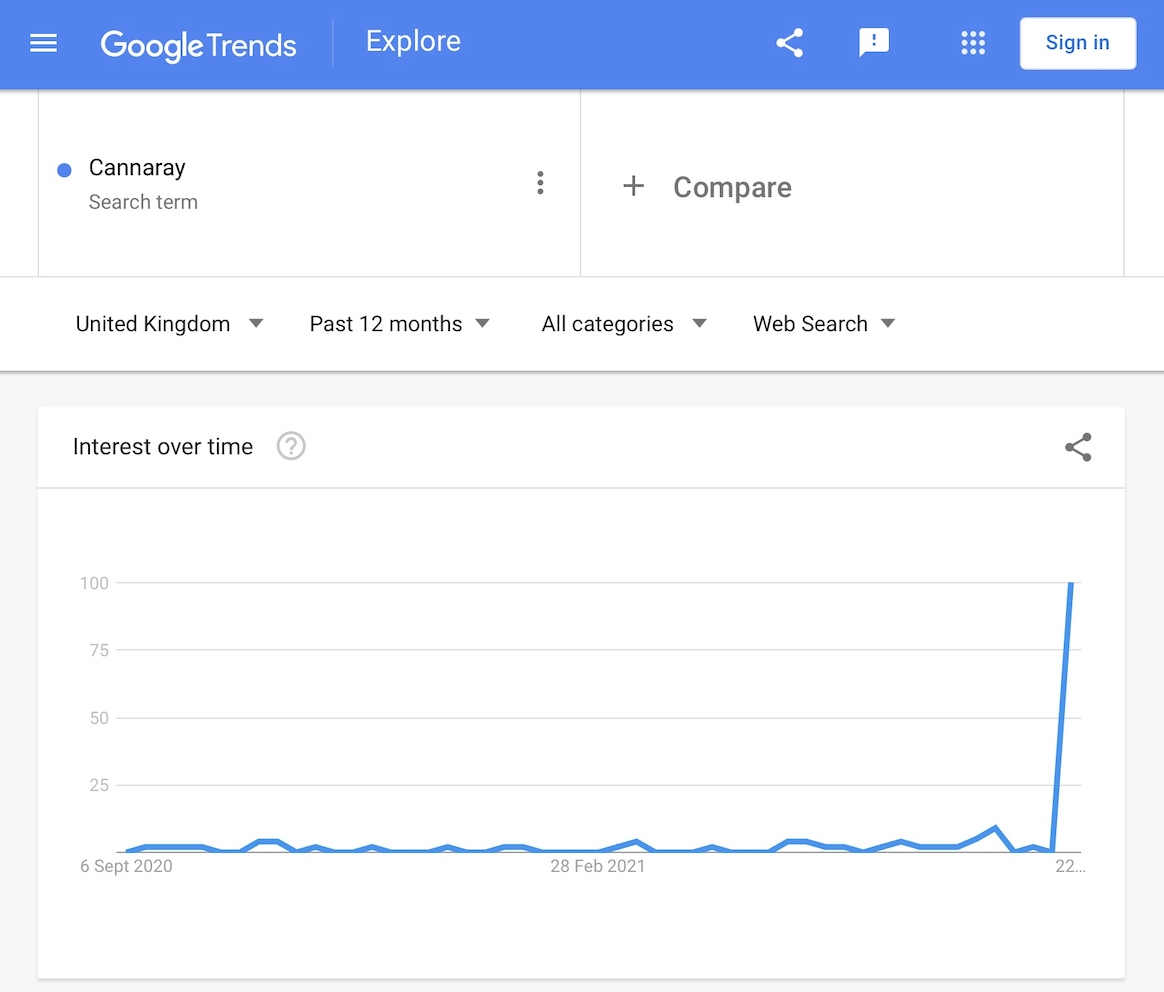Route 1 to the mainstream…telly

Dominic Mills analyses the ‘as seen on TV’ effect to achieve mainstream brand acceptance
When I saw back in July that CBD brand Cannaray had hired Claudia Winkleman as its brand spokesperson, I was puzzled.
CBD products…aren’t they for health nuts and yoga addicts? Like muscle shakes but for a more female audience? Chill pills for the worried well? You know, niche audiences.
And Claudia Winkleman…well, she’s the Duchess of Mainstream. So how does that fit?
Well, as of last week, it’s somewhat clearer, as Winkleman made her TV ad debut for the brand. It’s quite fun.
The creative concept is that Winkleman thinks she’s leading a revolution — marching, chanting, banners — to spearhead the use of CBD, whereas Cannaray just wants to promote trial — i.e. normalise it. Trouper that she is, Winkleman even parodies her Head and Shoulders ads with a diva-like request for a fringe comb.
Which brings us to the choice of medium: if you want your brand to be part of the mainstream, then TV is the medium of choice.
And if you think about it, TV is a no-brainer for Cannaray for several reasons.
- Digital in the UK is a nightmare with the social platforms banning it (weird, since they don’t ban more harmful categories)
- There’s an education job to be done to build the category — lots of people have heard of CBD but don’t understand it
- It’s a fragmented market with many players and if you can get a jump on the others by ‘mainstreaming’ and owning the market, then it would be criminal not to
- If you’ve got Claudia Winkleman as your brand spokesperson you’d be mad not to go on TV
- If you have national distribution in only hundreds — check out the list of stockists here — of Tesco and Asda stores then your shelf-life will be short unless you are on telly.
I should add, in what seems somewhat utterly bizarre to me, that Cannaray is also widely available in what I consider to be a very un-mainstream location: golf club shops.
It turns out that Cannaray is a sponsor of the PGA tour, and I get that amateur golfers can be prone to self-doubt, neuroticism and the occasional toddler-type tantrum, all requiring some form of medication. (the same might be said for Arsenal fans, heh heh.)
It looks like self-indulgence on the part of the Cannaray’s golf-loving big cheeses, but in fact it’s not that daft.
In the US, golfers are big for CBD and there is potential in linking with sport. Best therefore to think of golf in the UK as a support strategy.
So it seems to me, to get to the wider point, that Cannaray is just one of many new or up-and-coming brands who conclude that they cannot achieve their business goals without what is seen in some circles as a legacy medium for legacy brands — TV.
Not any more. ITV alone attracted 160 new-to-TV brands in the first half of 2021 and around 300 over the past year, using its creative and production facilities to make ads at cost, as well as initiatives like its airtime-for-equity scheme, which has seen the likes of What3Words and ISMyBillFair come to the screen.
In fact, if you burrow into the annual reports from those nice Thinkbox people, this trend has been under way for some time across the medium.
For the year 2018, Thinkbox reported 785 new-or-returning advertisers to TV; in 2019 it was 837 new advertisers (for some reason it stopped counting returners); and then in 2020, it was 1,243 advertisers making their TV debuts. For stat nerds, that’s an increase of just under 60% in three years.
Now there are several macro-economic reasons why this might be — some of which, notably the number of start-ups using VC/private equity cash to advertise their way to category domination, I touched on two weeks ago. But I think there’s another more instinctive factor at work here.
This is the signalling effect or halo effect of individual media channels, by which I mean what the use of a channel says about an advertiser, above and beyond the commercial message.
In fact, Thinkbox explores this in this year’s annual review of the business, citing research, which shows that the use of TV signals a combination of ‘fitness’ — financial strength, confidence, product quality — and ‘social’ — fame, popularity and so on — markers.
Of course, TV has always has had these qualities — remember those stickers ‘As seen on TV’? It’s just that people forget or a new generation emerges that doesn’t know.
But it’s an immutable law of media going back hundreds of years: new media channels never kill off the old ones. They mutate, evolve and at some point, their innate strengths come back into fashion.
Oh yeah, and the old ones usually work too.
The explicit goal of the Cannaray ad is to drive search — just watch the end frame — and if you plug ‘Cannaray’ into Google Trends you can see the massive spike from last week.

She’s taking Cannaray down Route 1 is Claudia.




